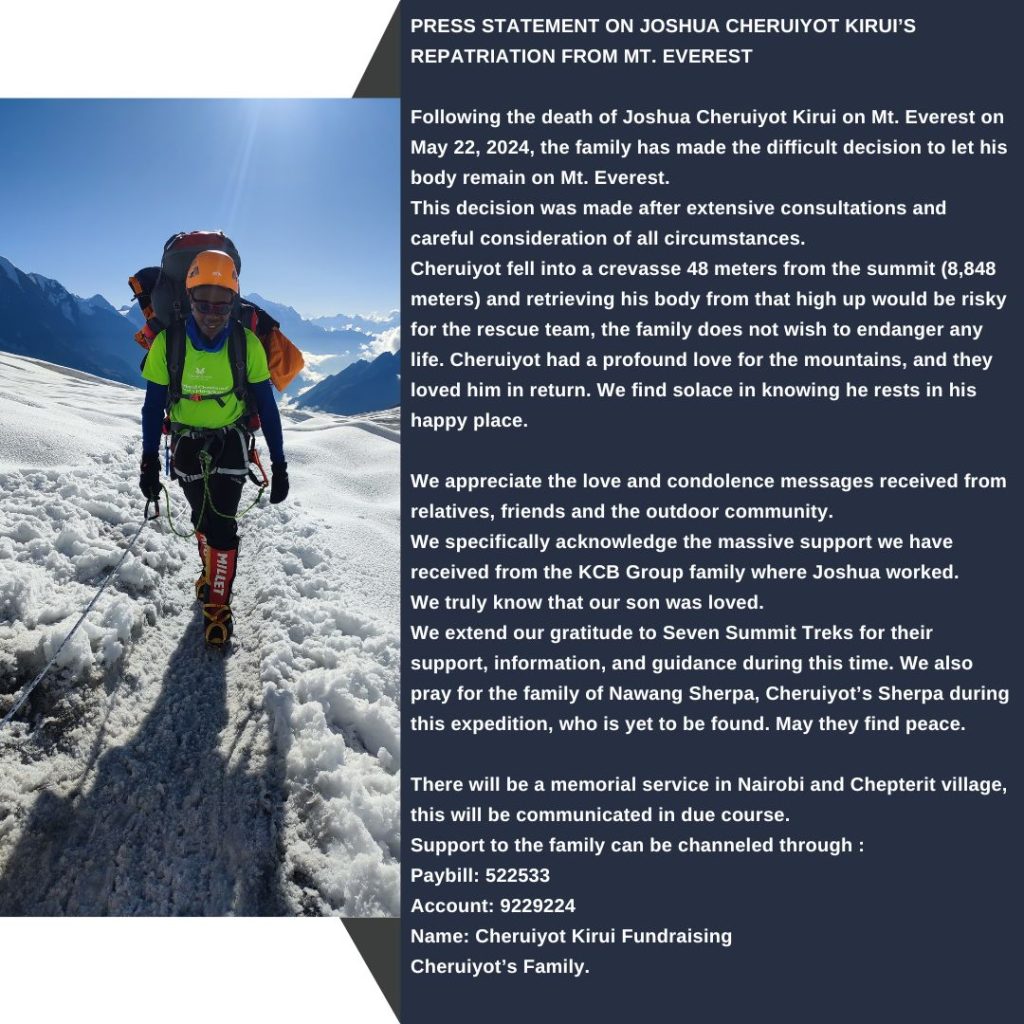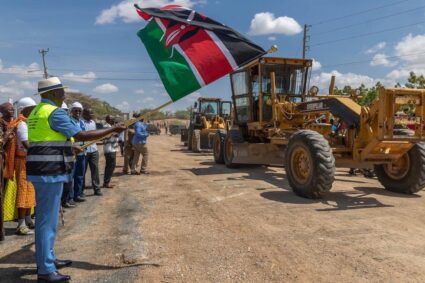Most people who die on Mount Everest are killed in avalanches and falls. Climbing Mount Everest used to be a feat of staggering bravery, endurance, and skill. In a recent Instagram post, mountaineer Rajan Dwivedi wrote, “Mt. Everest is not a joke and is, in fact, quite a serious climb.”
The climbing season on Mount Everest is currently in full swing, with hundreds of enthusiasts attempting to reach the summit.
On May 22, a 40-year-old Kenyan climber died near the summit of Mount Everest. The search and rescue team deployed by Seven Summit Treks found the body of Kirue Joshua Cheruiyot between the summit and the Hillary Step, while his climbing guide Nawang Sherpa, 44, remains missing.
Sherpa rescuers recovered Kirui’s body late on Wednesday, about 19 meters (62 feet) below the 8,849-meter peak, according to Nepal’s Department of Tourism.
“The body of Joshua Cheruiyot Kirui will remain where he died,” Kirui’s family said on Wednesday.
The latest death comes as officials continue the search for British climber Daniel Paul Paterson, 40, and his Sherpa guide Pas Tenji Sherpa, 23, who have been missing in the same area.
With this latest death, the total fatalities on Mount Everest this season have reached three, with an additional death reported on Mount Lhotse, which shares the same route. Last year witnessed a record high of 18 deaths on Everest.
Social media clips have also shown climbers screaming as they watch dead bodies slide by them.
Recently, in a post on X, the Northerner wrote, “Everest: the highest, the dirtiest, and the most controversial place on Earth. Humans bypassing corpses, leaving people dying, ignoring cries for help, making it the dirtiest place with pollution and human waste; all for the glory of the summit. When will it stop?!”
Mount Everest is the world’s tallest summit at 8,849 meters, and officials say more than 6,500 people have reached its peak, many of them multiple times since the mountain was first scaled by New Zealander Sir Edmund Hillary and Sherpa Tenzing Norgay in 1953.



